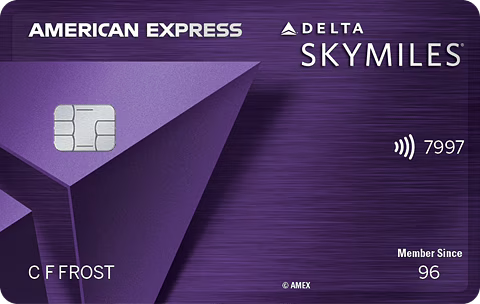
What If the SAVE Plan is Permanently Blocked? Scenarios and Alternatives
What if the courts permanently block the Saving on a Valuable Education (SAVE) plan? What would this mean for borrowers overall? And how would it impact you?
We’ll go into the scenarios that could happen if the SAVE plan is blocked and explore strategies to minimize the negative impact on your finances, no matter the outcome.How could the SAVE plan be blocked?
Republicans have shown a pattern of opposing student loan executive actions only when the cost is high — usually over $100 billion.For instance, the Biden administration’s smaller initiatives, like the income-driven repayment (IDR) account adjustment and the Public Service Loan Forgiveness (PSLF) waiver, went unchallenged legally.When the administration attempted to cancel over $400 billion in student debt, Republican elected officials opposed it in the courts, and they won.
With that cancellation plan having failed, the SAVE plan now carries a similar cost estimate north of $400 billion.The large price tag, along with how loud the administration was in promoting the SAVE plan, likely drew the attention of Republican state elected officials.These officials saw political incentives to challenge one of President Biden’s signature student loan initiatives.Even most casual observers know there’s a 6-3 conservative majority on the Supreme Court.
Given the Court’s skepticism on cancellation, it’s very likely that this same court will be skeptical of the SAVE plan, given its enormous price tag.SAVE plan scenario 1: A Harris win If Vice President Kamala Harris wins the 2024 election, her administration would likely appeal any lower court decision blocking the SAVE plan. While the Eighth Circuit Court has a conservative tilt (one judge appointed by a Democratic President and 10 appointed by Republican Presidents), it’s possible that a final ruling from the Supreme Court could be less conservative than the lower appeals court.Harris’ team would have strong incentives to fight in court to preserve parts of the SAVE plan (higher poverty line, interest subsidies, etc.).However, a final decision from the courts in this case might not come until the spring or summer of 2025.
SAVE plan scenario 2: A Trump win If former President Donald Trump wins in 2024, he very well might let a conservative-leaning ruling from the lower Appeals Court stand without appealing it to the Supreme Court. If the Eighth Circuit Court rules harshly against SAVE, we could see more stringent restrictions on IDR plans.We’d likely have a decision in this case in January 2025.See Your Lowest Payment If SAVE Is Blocked If SAVE is blocked, what would remain? There are multiple potential scenarios here, and each could have a different impact on borrowers. First, if Kamala Harris wins, then we wouldn’t know the final outcome until the Supreme Court has weighed in.That said, here are the main possibilities.
SAVE plan found partly or entirely legal In this scenario, parts of the SAVE plan might survive.If the courts found SAVE to be legal, it would likely be because of a technicality with the courts’ current composition. For example, one lower court judge asked why Republican plaintiffs had waited so long to block the plan.This judge only blocked small portions of the SAVE plan via an injunction rather than putting a stop to the entire program.If courts only block certain portions of the SAVE plan, it could leave much of the plan intact.
It’s possible that courts leave the SAVE plan mostly or entirely alone, but this path is the least likely outcome.SAVE found illegal, but other plans are legal If SAVE is ruled illegal, the system might simply return to its pre-COVID form.In other words, the following repayment plans would all come back into play: Pay As You Earn (PAYE) Income-Based Repayment (IBR) Revised Pay As You Earn (REPAYE) REPAYE, for instance, has a 50% interest subsidy on accrued interest but doesn’t allow married borrowers to file taxes separately to lower payments.REPAYE also requires borrowers to pay 10% of their income above a lower percentage of the poverty line than SAVE.
This scenario would be significantly less damaging than the worst-case scenario. If this happened, forgiveness would remain an option, but it would only make financial sense for those owing more than they earn (typically 1.5 times their income or more). PSLF loan forgiveness would still be available, and borrowers would generally still qualify without trouble.However, some married borrowers with high incomes would face large payments under the REPAYE plan in order to qualify for PSLF.REPAYE has no cap on payments, and without being able to file separately, that could result in very large payments.Those with the highest incomes might find themselves forced to abandon their forgiveness plans altogether.
SAVE and other IDR plans found illegal This is the worst-case scenario.Lower courts are considering the idea that any plan tied to IDR rules doesn’t allow for forgiveness. If that happened, the ICR, PAYE, and SAVE plans could be deemed illegal and would not be able to operate. REPAYE also couldn’t be resurrected, leaving IBR as the only remaining option.Without other IDR options, borrowers could only qualify for forgiveness if they had a “partial financial hardship,” which means their payment under IBR is less than the Standard 10-year amortized payment.For example, if you owe $200,000 in student loans, the IBR caps payments around $2,000 per month.
If your calculated IBR payment is $1,500 a month, you’re fine.But if your calculated IBR payment is $2,500 a month, you wouldn’t be able to sign up — and thus wouldn’t qualify for student loan forgiveness.How to get under the IBR payment cap if SAVE is repealed If REPAYE isn’t an option and SAVE is tossed as well, borrowers might need to get creative to slip under the payment cap and qualify for IBR.Here are a few strategies: Taking an unpaid leave of absence or switching to a new, lower-paying job.
This could allow you to recertify your income with a $0 monthly payment and sign up for IBR even if you earned too much money to qualify normally.Filing taxes separately to avoid having your spouse’s income counted.Protecting yourself if SAVE is repealed Ultimately, it’s important to realize when the courts or Congress create a mess, there’s often enormous political pressure to fix it.If SAVE is repealed, throwing millions of borrowers into chaos, it might force the hand of Congress to make meaningful changes to the student loan system as they are supposed to do approximately every 10 years through the Higher Education Act.
Congress hasn’t done this for many years, and thus the executive branch has stepped into the void to try and implement policy on its own.As an example of how Congress fixes student loan problems, consider the “spousal consolidation loan” mess, which only impacted a few hundred borrowers.Those borrowers were stuck paying their loans with ex-spouses, sometimes for more than a decade. Congress finally acted after doing nothing for years.However, the Department of Education is still working to implement these fixes.
This example might not be soothing, but it’s a problem that only impacted a few hundred people in the whole country. In contrast, if the repeal of SAVE included the repeal of other IDR plans, such as REPAYE, then the pressure to act would be enormous.Physicians would potentially need to temporarily quit their jobs in order to get enrolled into IBR and PSLF, and that would raise enormous eyeballs and attention to motivate Congress to act.This is an extreme scenario.It’s far more likely that courts would return to the pre-COVID system of PAYE, REPAYE, and IBR.
However, a SAVE backup plan is important for borrowers to prepare for different scenarios and consider how the changes could affect their student loan repayment strategy.If you need a backup plan, book a consult with our team.
Publisher: Source link




